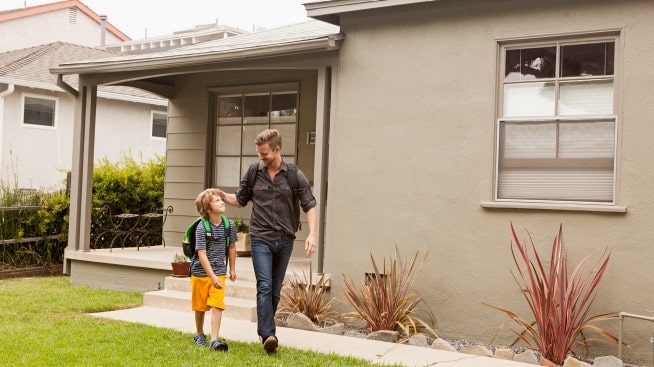What is an art deco house?

Art Deco is quintessential to the early 20th century, an artistic movement that holds profound significance in the art and architectural worlds. Let's discover the distinct characteristics of art deco houses, take in their historical significance and, ultimately, gain a greater appreciation of their unique charm.
What does art deco mean?
At its core, "Art Deco" is the name for a period of rich artistry that left an architectural legacy, beginning in the early 20th century. It emerged as a response to far-reaching societal changes and growing pains that marked the era between the two World Wars, from the 1920s to the 1940s.
Art deco, in its simplest form, is a marriage of art and modernity. It encapsulates an eccentric blend of influences, such as Cubism and Futurism, embracing all things geometric. This design style highlights symmetry, clean lines and elegance tied together by a theme of luxury.
As the Art Deco movement spread across artforms, it naturally found its way into the architectural world, paving the path for what we now know as art deco houses. The transition from an up-and-coming art form to a fundamental architectural style was notable, making art deco homes an icon of the movement. The movement made noise in France and traveled internationally — due mostly to a government-sponsored exposition — in 1925.
Art deco homes
An art deco home's distinctive features pay homage to the Art Deco period. Their captivating opulence typically places them as a neighborhood standout. But what exactly are those show-stopping features? Here are some examples of art deco home design:
- Geometric patterns: Geometric patterns like zigzags and chevrons are common in art deco home design. You may see these patterns on the facades, the windows or even in the interior, where you may just find these patterns dancing across the wall.
- Parapets and spires: A parapet is an upward extension of a wall typically at the edge of a roof or terrace. Art deco homes often sport striking parapets and spires that contribute to an air of grandeur. These ornamental elements serve an aesthetic purpose, but also reflect the period's fascination with verticality.
- Decorative geometric windows: One of the main characteristics of the art deco architectural movement is the presence of large windows often adorned with geometric designs.
- Fragmented shapes: Art deco celebrates the concept of fragmentation through shapes that create a puzzle-like appearance.
- Contrasting colors: Bold and contrasting colors are a common feature of art deco homes, with dramatic color palettes that help create an eye-catching exterior. For example, black and gold with a bright orange or jewel tone.
- Specific building materials: Stucco, concrete, terracotta and smooth-faced stone are common building materials used throughout the Art Deco period, providing a physical and visual sense of forward-thinking durability.
Should I buy an art deco home?
Ultimately, the decision to buy an art deco home hinges on your personal stylistic preferences. If you have a natural or growing appreciation for this time period, then exploring an art deco house may be an exciting prospect. If you're not sure whether an art deco-style home is right for you, consider the following:
- Your personal, aesthetic preferences: If you are attracted to contrasting colors and geometric motifs, then art deco may be right up your alley. If, however, you prefer something simpler or more classic, then it might be best to consider exploring other types of homes.
- Historical and artistic appreciation: Whether you appreciated learning about the interwar period in history class or have a natural affinity toward Art Deco artists like George Barbier or Sonia Delaunay, then buying an art deco home may be right for you.
- Neighborhood surroundings: Does this style home fit in with its neighborhood surroundings? Whether you're buying or building an art deco-style home, consider the environment. While everyone should live in a space that makes them happy, the way your home fits into its neighborhood may potentially impact resale value.
In summary
Born between two World Wars, Art Deco holds a unique place in art and architecture. Its bold colors, geometric shapes and tactical use of linear asymmetry creates an incredibly captivating stage for home décor. While this distinctive style may not be for everyone, it's a piece of art history with the potential to call home.



